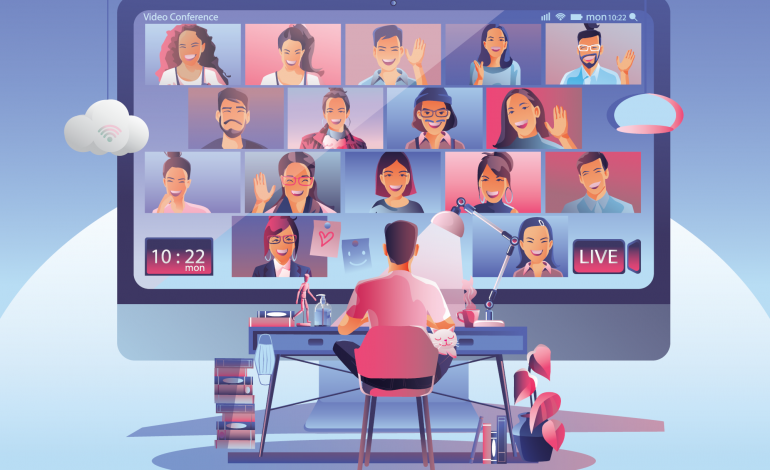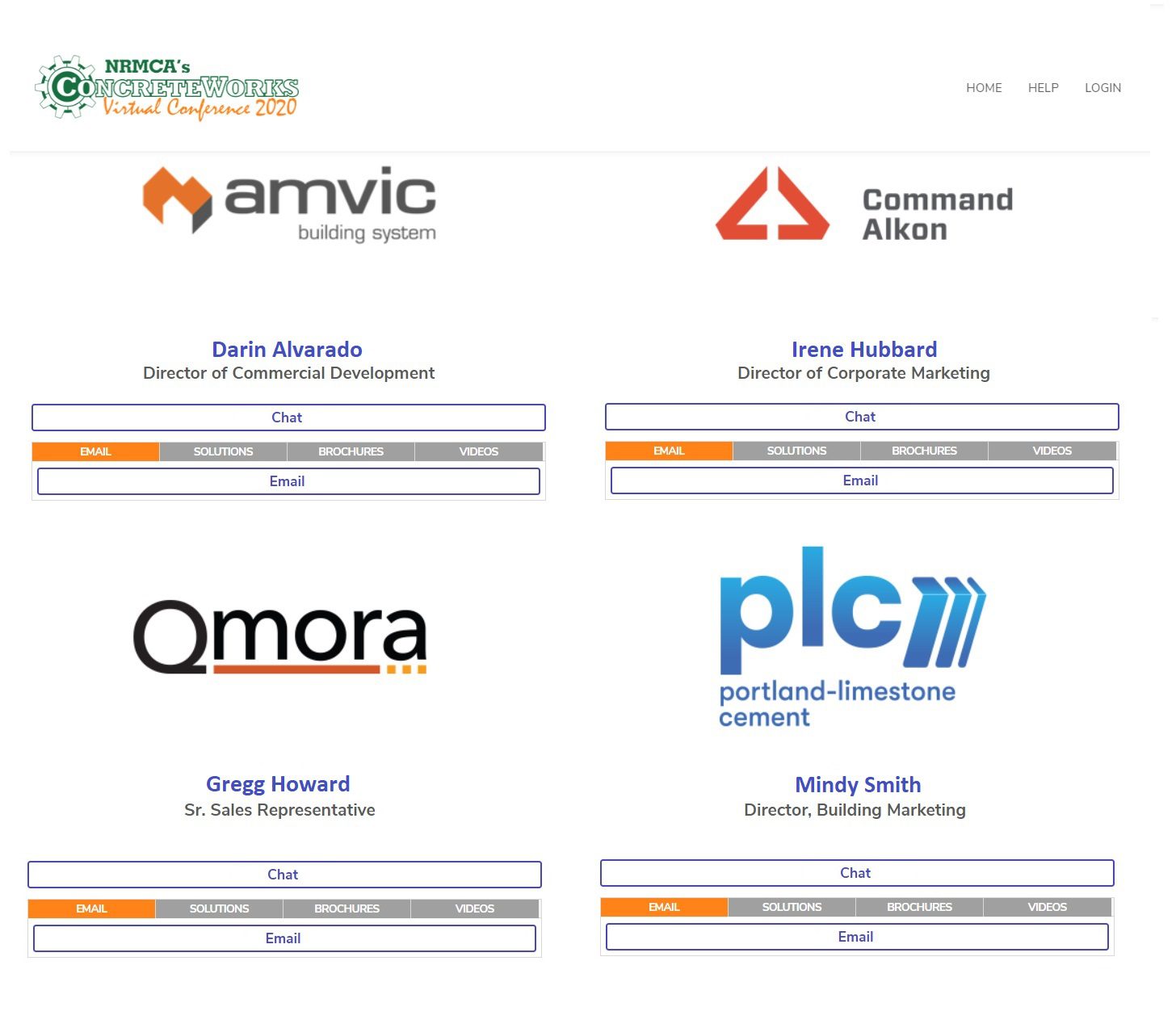
The COVID-19 pandemic has led many industry conferences and trade shows to turn to virtual internet-based options as an alternative to physical events. Virtual events are appealing as a way to continue networking and meeting opportunities in an environment that is completely safe and easy to attend for all. Virtual events allow for industries to still gather people together in large numbers to listen to keynote speakers and exchange information without the challenges that currently go hand-in-hand with large in-person gatherings.
For event coordinators who have years of experience running physical events, the switch to virtual brings unexpected challenges. You probably already have an event website and video options for keynote speakers, but that’s just the start of what you need in order to replicate all that a physical trade show offers in an online form. You’ll need dedicated landing pages for different subject areas, downloadable materials to replace physical handouts, public Q&A venues, and more.
But video chat or even a public chat room may not be enough to replace many of the elements that are found in an in-person event. None of these forms are conducive to private meetings, individual networking, or gathering together relevant contacts. For those critical aspects of industry events, live chat is likely the missing piece that will help make your virtual conference a success.

A video chat service like Zoom is often what an event coordinator will think of when considering what virtual conference platform to use. That’s because the important guest speakers are often the first thing that comes to mind for a conference planner. The first problem that needs to be solved may simply be how to present these speakers for everyone, in which case video conferencing is a great tool. However, simply having video for keynote speakers is not enough to elevate a virtual conference to a true replacement for a physical one.
Video conferences can come with a few inherent problems. First, video calls can make true personal interaction challenging. The speaker cannot move and look around the room in a virtual conference the same way that a speaker in a conference room can. “Virtual fatigue” from staring at a smaller screen may set in, both for the speaker in front of their screen and for the attendee who is staring at a small screen rather than a person moving around on a stage.
Technical issues can be another factor, since each attendee will be using a different internet connection with its own level of quality. Audio delays and video sync problems can draw focus away from what is actually being said.
Whether the issue is technical or simply a matter of virtual speaking being a bit less engaging, having live chat on-site in addition to the video presentation will add interactivity that makes events much more exciting and valuable. With live chat you can easily break out into a one-on-one session for further discussion. This will allow you to get the most out of your virtual event, because those key conversations after a presentation are often some of the most useful parts of a traditional conference.
Speakers benefit from live chat by being able to provide more individual interaction without having to multi-task while giving their initial presentation. They can flag individuals in the group chat who ask questions for individual follow-up after the presentation is over, and share a “direct link” live chat opportunity so attendees who don’t feel comfortable posting their question publicly can reach out. Here’s an example of how Formilla’s direct link feature looks on our own site:

Event hosts and coordinators can benefit from live chat too. You can use live chat to answer general questions about the event schedule or content, performing the “info desk” role that’s always so critical for physical conferences. You may also want to have a technical team standing by to assist to help people using the virtual conference tools, and live chat is a great way to make that help available. In general, live chat is a great way to have immediate help on hand to answer questions about anything that might come up. Traditional contact forms and email are just too slow to get people the help they need quickly, so they don’t miss valuable time while the conference is active.
For speakers, participants, attendees, and hosts, virtual events need live chat to be complete. Hosting a virtual conference and simply offering email and phone as contact methods for one-to-one conversations with vendors and event staff is slow and lacking. Live chat allows any event or conference to be the most effective and most efficient experience possible in a virtual environment.

The most valuable part of in-person trade shows and other kinds of conferences has not always been the keynote speakers. Private meetings, networking, and personal interaction between vendors and attendees at booths have always been the bread and butter of these events. None of these can be replicated simply by video speeches from your big guest speakers, but utilizing live chat will allow you to do all of the above!
With live chat you can run virtual trade show booths to help replace the open-floor networking of physical events. Instead of walking up to the appropriate booth or table, attendees can reach out to start “vendor booth” chat sessions with people/topics/businesses they are interested in speaking with. This can be set up with a direct link feature, with a link to go straight into chat with the party an attendee is trying to reach. Chat departments are another way that routing chats can be structured, depending on the needs of your conference. You can set up a department for each vendor for example, so that each vendor has their own chats routed to only the team they want available to chat with attendees.
Live chat is even better in some ways than an in-person booth visit. Everything is documented via the chat transcript generated while talking. There is no need to shout over the ambient conference noise. There are no lost business cards or leads that are missed out on, since contact information is retained in the same chat transcript.
Multi-tasking is also easier all-around while using live chat. An attendee can actually chat with multiple booths at once if they would like, a feat that can not be duplicated by physically walking up to multiple physical booths at the same time. There is no wait needed to begin speaking with the desired party either.
Similarly, a vendor will also find it much easier to multi-task over chat. Multiple conversations can be had at the same time without worrying about attendees talking over each other or being heard at all over the ambient noise at a physical conference. A single booth rep can carry on multiple interactions without being overworked.
Not every conversation is suitable for a public chat room or posting in comments alongside a speaker video that everyone can see. Live chat also replaces the valuable private meetings for enhanced networking that are possible with in-person events. Attendees can use live chat for comments that they do not want the whole event to see. Agents can publicly answer questions that appear in the main chat box while separately answering queries that come into virtual vendor booths via live chat widgets, then they can proactively engage potential leads in private chats to take things further.
Privacy is always a plus for professional settings, but it’s even more important for certain types of conferences. If you’re an event coordinator in the legal or medical industry, for example, then you understand that the ability to have a private conversation is crucial for a productive event. A virtual event that is nothing more than speakers on video alongside a public chat room is far less valuable to everyone involved than one that has private on-site chat functionality.
Vendors and event staff can easily use live chat to gather leads at a virtual event. One good practice to help with this is to use pre-chat fields to gather contact information before a chat starts. This allows you to make certain you have a way to reach every attendee for follow-up when needed at a later time. You can pre-qualify leads as well, send invitations to future events to attendees, reach out with special offers to an audience you know is engaged in your industry, and more. We’ve covered live chat as a sales tool before, and most of the techniques we discussed can easily be applied to an event chat widget.
What is the ultimate goal of your conference? If your goals are transactional at all, then you will want to have live chat as a tool to help you reach those goals more effectively. You can even easily integrate your trade show chat interactions directly into your everyday CRM to track and qualify leads, and from there you can automatically send relevant follow-ups. That way, the business benefits you get from a virtual industry event don’t end when the event does; instead, that’s just the beginning of the expected boost for your business.

ConcreteWorks is an annual event held by the National Ready Mixed Concrete Association. Due to local restrictions where the physical event would have taken place, as well as concern for association members and workers, the decision was made for a virtual venue instead. The virtual event was slated to still feature meetings, educational sessions, keynote speakers, and a virtual exhibition that would allow members to continue to network and conduct business with the various vendors.
The ConcreteWorks event planners used Formilla live chat as a tool to handle their virtual conference. An exhibition page was set up with listings of individuals and groups who would normally have their own “booth” or table at a live event. Each listing had links to helpful resources that would be available at an in-person show (brochures, videos, etc). Each party listed also had a direct link to live chat so that attendees could stop by to talk at their leisure. The links to chat all opened up a chat window that routed only to the party the attendee was trying to reach.
With this particular set up, an attendee had the advantage of being able to have questions answered within moments as they were browsing the offerings at a given booth. Attendees were even been able to start multiple simultaneous chat sessions to discuss business, all without having to walk across a crowded venue hall and potentially waiting in line to start a discussion. Each vendor had the option of utilizing pre-chat fields for their chat as well, allowing for individual flexibility with the contact information that was automatically obtained just by starting a chat.
As you can see, on-site live chat is a critical tool to make your virtual conference or trade show complete, and goes a long way towards replicating the benefits of physical events that are too often left out of online-only experiences. If you’re an event coordinator looking to get the most out of a virtual conference, or a trade show planner struggling to replicate all the value of real-world events online, you need to be looking at live chat as a method to complete the online event experience.
You can start testing out live chat today with a free trial of Formilla to see how your organization can benefit from real-time, private conversations with site visitors and potential leads. And if you have questions about using live chat for conferences, please reach out via the chat widget on our site for assistance.
Related reading: